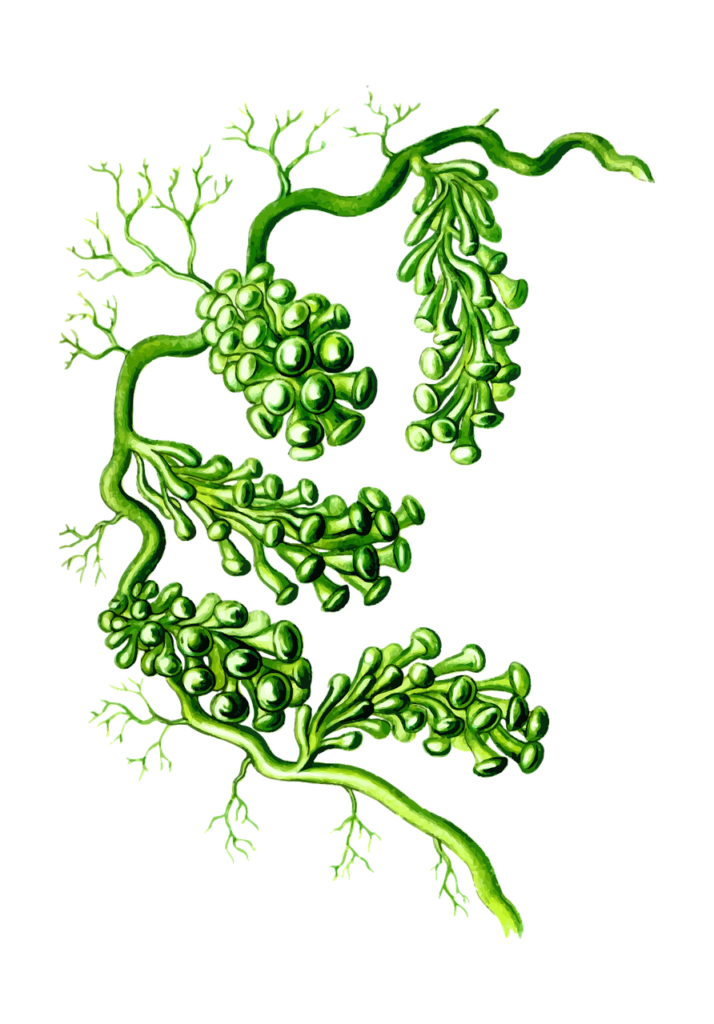Are you a beach lover considering a trip to the beautiful beaches of Mexico? If so, it’s important to understand the unique phenomenon of the seaweed seasons that occur along the Mexican coastline. In this article, we will dive into the different seaweed seasons, from the high season when seaweed is more prevalent to the low season when the beaches are clearer. Discover the impact of seaweed on your beach experience, the factors influencing seaweed growth, and the best times to plan your visit to enjoy the pristine shores of Mexico. So, put on your sun hat and get ready to explore the fascinating world of seaweed seasons on Mexican beaches!
Introduction
Welcome to our comprehensive guide on understanding the seaweed seasons on Mexican beaches! If you’ve ever visited the beautiful coastal regions of Mexico, you might have noticed the occasional influx of seaweed along the shorelines. In this article, we will explore what seaweed is, its types, and its importance in the ecosystem. We will also delve into the factors that affect seaweed seasons, the impact of seaweed on Mexican beaches, management techniques, famous Mexican beaches with seaweed issues, community efforts and initiatives, seaweed benefits and utilization, and future outlook and solutions. So grab a drink, sit back, and let’s dive into the world of seaweed!
What is Seaweed?
Definition of Seaweed
Seaweed, also known as macroalgae, is a type of marine plant that grows in the ocean. It is categorized into three main groups: green algae, brown algae, and red algae. Seaweeds come in a variety of sizes, ranging from small microscopic organisms to giant kelp forests. They play a crucial role in marine ecosystems, providing food and habitat for many species.
Types of Seaweed
There are thousands of different species of seaweed, each with its own unique characteristics. Some common types include kelp, bladderwrack, Irish moss, nori, and dulse. These seaweeds vary in terms of color, texture, taste, and uses. Some are edible and used in various cuisines, while others are utilized in the production of cosmetics, fertilizers, and even renewable energy.
Importance of Seaweed in the Ecosystem
Seaweed plays a vital role in the ecosystem by providing numerous benefits. It acts as a primary producer, converting sunlight and nutrients into energy through photosynthesis. This process not only produces oxygen but also removes carbon dioxide from the atmosphere, helping mitigate climate change. Seaweed also provides food and shelter for a wide range of marine organisms, contributing to biodiversity and supporting the entire food chain.
Relevance of Seaweed to Mexican Beaches
Seaweed is particularly relevant to Mexican beaches due to their geographical location and oceanographic conditions. Mexico’s vast coastline is exposed to ocean currents and is influenced by factors that contribute to the growth and accumulation of seaweed. Understanding the seaweed seasons in Mexico is crucial for effectively managing and mitigating its impact on coastal areas and tourism.

Factors Affecting Seaweed Seasons
Water Temperature
Water temperature plays a significant role in the growth and distribution of seaweed. Different species have specific temperature requirements for optimal growth, and fluctuations in water temperature can affect their abundance. Warmer waters typically favor the growth of certain seaweed species, contributing to increased seaweed activity.
Salinity Levels
Salinity, the salt content in seawater, is another important factor influencing seaweed growth. Some seaweed species thrive in high-salinity environments, while others prefer lower levels. Changes in salinity due to natural processes or human activities can impact the composition and abundance of seaweed communities.
Nutrient Availability
Availability of nutrients, such as nitrogen, phosphorus, and trace elements, is crucial for seaweed growth. Nutrient-rich waters provide favorable conditions for rapid seaweed proliferation. Natural processes, including upwelling and nutrient runoff from the land, as well as human-induced factors like pollution, can affect nutrient availability in coastal areas.
Climate Change Impact
Climate change has the potential to alter seaweed seasons on Mexican beaches. Rising temperatures, ocean acidification, and changing weather patterns can influence the growth, distribution, and reproductive cycles of seaweed species. Understanding and monitoring these climate-related changes is crucial for predicting and managing seaweed blooms.
Ocean Currents
Ocean currents play a significant role in the transport and distribution of seaweed. They can carry seaweed from distant regions, leading to accumulations on Mexican beaches. The complex interaction of global and regional ocean currents determines the patterns of seaweed movement along the coastlines.
Coastal Pollution
Pollution, both from land-based and marine sources, can impact the health of coastal ecosystems, including seaweed communities. Excessive nutrient runoff, sewage discharge, and chemical pollutants can stimulate seaweed growth or cause shifts in species composition. Pollution control measures and proper waste management are vital to minimize its impact on seaweed seasons.
Seaweed Blooms and Seasonal Variations
Definition of Seaweed Bloom
A seaweed bloom refers to an unusually high abundance of seaweed in a particular area or period. It is characterized by rapid growth and accumulation of seaweed, often leading to dense mats along the shoreline. Seaweed blooms can occur naturally or be influenced by environmental factors and human activities.
Different Seaweed Seasons in Mexico
Mexico experiences different seaweed seasons throughout the year, varying in intensity and duration. The Pacific coast, Gulf of Mexico, and Caribbean Sea each have their distinct patterns and timing of seaweed blooms. Understanding these regional variations is essential for effective management and planning.
Peak Seaweed Bloom Periods
Mexico’s peak seaweed bloom periods generally occur during the warmer months, from May to September. During this time, seaweed growth is typically more active, and larger accumulations are observed on Mexican beaches. Factors like water temperature and nutrient availability contribute to the peak bloom periods.
Low Seaweed Activity Periods
While peak seaweed bloom periods are more noticeable, there are also periods of lower seaweed activity along Mexican beaches. These periods typically occur during the cooler months, from November to March. However, the exact timing and duration can vary from year to year due to natural variability and other environmental factors.
Cyclic Patterns of Seaweed Growth
Seaweed growth and bloom patterns often exhibit cyclic behavior influenced by various biotic and abiotic factors. Understanding these cyclical patterns can help predict and manage seaweed seasons on Mexican beaches. Research and monitoring efforts play a crucial role in developing effective strategies for seaweed management.

Impact of Seaweed on Mexican Beaches
Effects of Excessive Seaweed Accumulation
Excessive seaweed accumulation on Mexican beaches can have both visual and environmental impacts. The presence of vast amounts of seaweed can diminish the aesthetic appeal of the beaches, affecting the tourism industry. Furthermore, as the seaweed decomposes, it consumes oxygen and releases hydrogen sulfide, leading to unpleasant odors and potential harm to marine life.
Ecological Consequences on Marine Life
Seaweed blooms can disrupt the delicate balance of marine ecosystems. Dense mats of seaweed can smother coral reefs, seagrass meadows, and other important habitats. They can also block sunlight from reaching the seafloor, affecting the growth and survival of benthic organisms. Understanding these ecological consequences is essential for conservation efforts and sustainable coastal management.
Tourism and Economic Implications
Mexico’s beaches are a major attraction for tourists from around the world. Seaweed blooms can significantly impact the tourism industry, as visitors may be deterred by the presence of excessive seaweed. This can lead to economic losses for local businesses, including hotels, restaurants, and tour operators. Effective seaweed management strategies are vital to minimize the negative impact on tourism.
Beach Cleanup and Management Efforts
Various beach cleanup and management efforts are being undertaken to mitigate the impact of seaweed on Mexican beaches. Local communities, governmental organizations, and non-profit groups organize cleanup campaigns to remove accumulated seaweed. Additionally, innovative strategies are being developed to repurpose and utilize the seaweed, turning it into a valuable resource.
Seaweed Management Techniques
Manual Removal and Raking
One of the primary methods used to manage seaweed accumulation is manual removal and raking. This involves physically removing the seaweed from the shorelines using tools and machinery. It is a labor-intensive process but can be effective in clearing beaches and restoring their natural beauty.
Mechanical Methods
Mechanical methods, such as the use of specialized equipment and machinery, are employed in large-scale seaweed removal. This includes the use of excavators, tractors, and conveyor belts to collect and transport the seaweed away from the beaches. Mechanical methods can significantly increase the efficiency of seaweed cleanup.
Natural Remediation
Natural remediation techniques involve harnessing the power of nature to manage seaweed accumulation. This includes the use of seaweed-consuming organisms, such as certain species of fish, sea urchins, and marine invertebrates, to control seaweed growth. Research is ongoing to understand and optimize these natural remediation methods.
Seaweed Repurposing and Utilization
As an alternative to seaweed removal, repurposing and utilization can be a sustainable management approach. Seaweed can be used as a raw material for various products, including fertilizers, animal feed, cosmetics, and even biofuels. Developing seaweed-based industries can provide economic opportunities while reducing the need for extensive removal efforts.
Monitoring and Forecasting Systems
Monitoring and forecasting systems are essential tools for effective seaweed management. These systems utilize remote sensing technologies, satellite imagery, and oceanographic data to monitor seaweed blooms and predict their movements. Early detection and accurate forecasting can aid in planning cleanup efforts and minimizing the impact on beaches.

Famous Mexican Beaches with Seaweed Issues
Cancun
Cancun, located on the Yucatan Peninsula, is one of Mexico’s most popular tourist destinations. However, it has experienced significant seaweed-related challenges in recent years. The accumulation of seaweed on Cancun’s beaches has had a negative impact on tourism, leading to ongoing efforts to address the issue.
Tulum
Tulum, known for its ancient ruins and stunning beaches, has also grappled with seaweed issues. The picturesque coastline has faced seaweed blooms, affecting its natural beauty and attracting attention from both tourists and local authorities. Various initiatives have been implemented to mitigate the impact on Tulum’s beaches.
Playa del Carmen
Playa del Carmen, a vibrant coastal city along the Riviera Maya, has also been affected by seaweed blooms. The accumulation of seaweed has raised concerns among tourists and local businesses, as the beaches are a significant attraction. Cleanup efforts and management strategies are being implemented to maintain the appeal of Playa del Carmen’s coastline.
Cozumel
Cozumel, an island off the eastern coast of the Yucatan Peninsula, has faced challenges with seaweed accumulation. The island’s renowned diving spots and pristine beaches have been impacted by seaweed blooms. Coordinated efforts are underway to manage and restore Cozumel’s beaches, ensuring they remain inviting for visitors.
Puerto Vallarta
Puerto Vallarta, located on Mexico’s Pacific coast, has also experienced seaweed-related issues. While the specific seaweed species may vary from the Caribbean side, the challenges and impacts are similar. Puerto Vallarta’s authorities and community have been actively engaged in addressing the seaweed issue to maintain the city’s allure.
Acapulco
Acapulco, a long-established beach destination on the Pacific coast, has not been immune to seaweed issues. The accumulation of seaweed on its shores has posed challenges for tourism and beach maintenance. Efforts are being made to understand and manage the seaweed presence to ensure Acapulco remains a favorite destination for travelers.
Community Efforts and Initiatives
Local Beach Cleanup Projects
Local communities and volunteers have been actively involved in beach cleanup projects across Mexico. These initiatives aim to remove accumulated seaweed, restore the beaches’ natural beauty, and create a sense of community involvement. They play a crucial role in maintaining the cleanliness and attractiveness of Mexican beaches.
Environmental Awareness Campaigns
Environmental awareness campaigns are instrumental in educating both locals and tourists about the importance of seaweed management. These campaigns aim to raise awareness about the ecological significance of seaweed, the challenges associated with its accumulation, and the need for sustainable practices. By promoting responsible beach behavior, these campaigns encourage individuals to be part of the solution.
Collaborations with Research Institutions
Collaborations between local communities, beach management authorities, and research institutions have been established to study and address seaweed-related issues. These partnerships enable the sharing of knowledge and expertise, leading to more informed decision-making and the development of effective management strategies.
Volunteer Programs
Volunteer programs provide individuals with the opportunity to actively contribute to seaweed management efforts. These programs engage local and international volunteers in various activities, including beach cleanup, data collection, and outreach initiatives. By actively participating, volunteers contribute to the health and sustainable management of Mexican beaches.
Sustainable Tourism Practices
The tourism industry plays a vital role in coastal areas, including Mexican beaches. Adopting sustainable tourism practices can help minimize the impact of seaweed on the environment and local communities. This includes promoting responsible tourism behavior, reducing pollution and waste, and supporting initiatives that cultivate a harmonious relationship between tourism and nature.

Seaweed Benefits and Utilization
Commercial Uses of Seaweed
Seaweed has a wide range of commercial applications across various industries. It is used in the production of food products such as sushi nori, carrageenan, and alginates. Seaweed is also utilized in the pharmaceutical industry for its potential therapeutic properties. Additionally, it is used in the manufacturing of cosmetics, fertilizers, and even in wastewater treatment.
Nutritional Value of Seaweed
Seaweed offers a rich source of essential nutrients and minerals. It is low in calories and fat while being high in fiber, vitamins, and antioxidants. Regular consumption of seaweed has been associated with numerous health benefits, including improved heart health, weight management, and immune system support. Incorporating seaweed into a balanced diet can be a nutritious choice.
Cosmetic and Beauty Products
Seaweed has long been valued for its beneficial properties in skincare and beauty products. Its natural components, such as vitamins, antioxidants, and minerals, contribute to rejuvenation, hydration, and anti-aging effects. Seaweed extracts are used in various skincare products, including masks, creams, and hair care products, providing a natural and sustainable option.
Seaweed in Traditional Mexican Cuisine
In Mexican cuisine, seaweed has a notable presence in traditional dishes and regional specialties. It is used in soups, stews, salsas, and even as a taco filling. The unique flavors and textures of seaweed add depth and variety to Mexican culinary traditions. Exploring the culinary potential of seaweed offers a delightful and culturally rich experience.
Potential as a Renewable Energy Source
Seaweed holds potential as a renewable energy source due to its rapid growth and high carbon uptake. It can be converted into biofuels, such as biodiesel and biogas, contributing to reduced dependency on fossil fuels. Utilizing seaweed for energy generation offers a sustainable and environmentally friendly alternative, supporting the transition towards a greener future.
Future Outlook and Solutions
Research and Development Efforts
Research and development efforts focused on seaweed management are crucial for addressing the challenges associated with seaweed seasons on Mexican beaches. Studies on seaweed growth dynamics, species-specific responses to environmental factors, and innovative mitigation strategies are necessary. Continued investment in research can lead to more effective management techniques and long-term solutions.
Adaptation Strategies for Tourism Industry
The tourism industry in Mexico needs to adapt and develop strategies to minimize the impact of seaweed on visitor experiences. This includes diversifying tourism activities, promoting alternative attractions, and implementing shoreline management practices. By embracing sustainable approaches, the tourism industry can continue to thrive while safeguarding the natural beauty of Mexican beaches.
International Cooperation and Knowledge Sharing
International cooperation and knowledge sharing are essential for addressing the global challenge of seaweed management. Collaboration between countries, research institutions, and organizations can lead to the development and implementation of best practices. Sharing lessons learned, successful strategies, and scientific findings can contribute to more effective and sustainable seaweed management worldwide.
Technological Innovations for Seaweed Monitoring
Technological innovations play a significant role in seaweed monitoring and management efforts. Remote sensing technologies, advanced imaging techniques, and real-time oceanographic data can enhance the accuracy and efficiency of seaweed detection and forecasting. Investing in and adopting these technological advancements can revolutionize the way seaweed seasons are managed.
Sustainable Seaweed Management Practices
The adoption of sustainable seaweed management practices is crucial for the long-term health and resilience of Mexican beaches. This includes implementing effective seaweed removal and cleanup methods, incentivizing seaweed repurposing, and minimizing coastal pollution. By prioritizing sustainable practices, Mexico can continue to enjoy the beauty of its beaches while protecting its fragile coastal ecosystems.
In conclusion, understanding the seaweed seasons on Mexican beaches is vital for effective management and mitigation of their impact. By exploring the factors that affect seaweed growth, the consequences on marine life, and the efforts being undertaken to address the issue, we can work towards a sustainable coexistence with this natural phenomenon. With ongoing research, technological advancements, and collaborative initiatives, a brighter future is envisioned where Mexican beaches and seaweed thrive together harmoniously. So, next time you visit a Mexican beach, take a moment to appreciate the complexities and beauty of this unique ecosystem, even if seaweed is part of the scenery.

